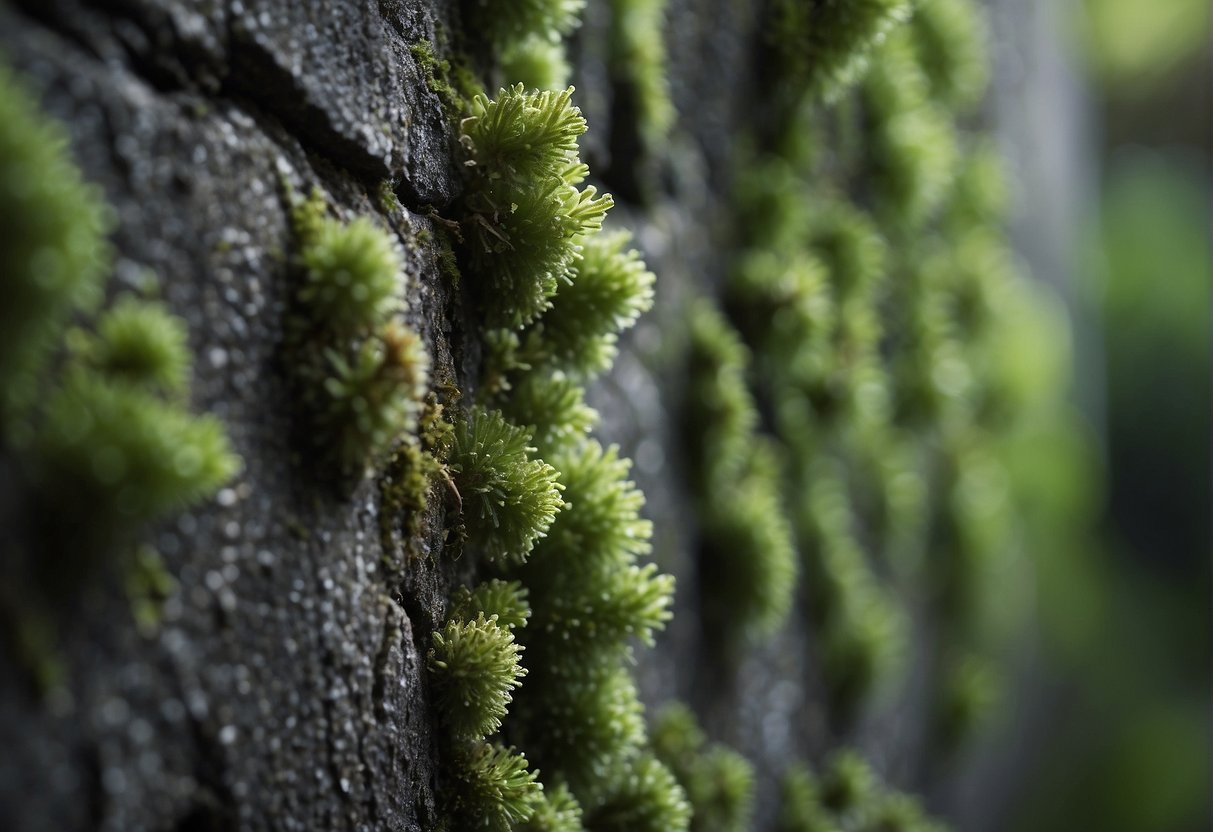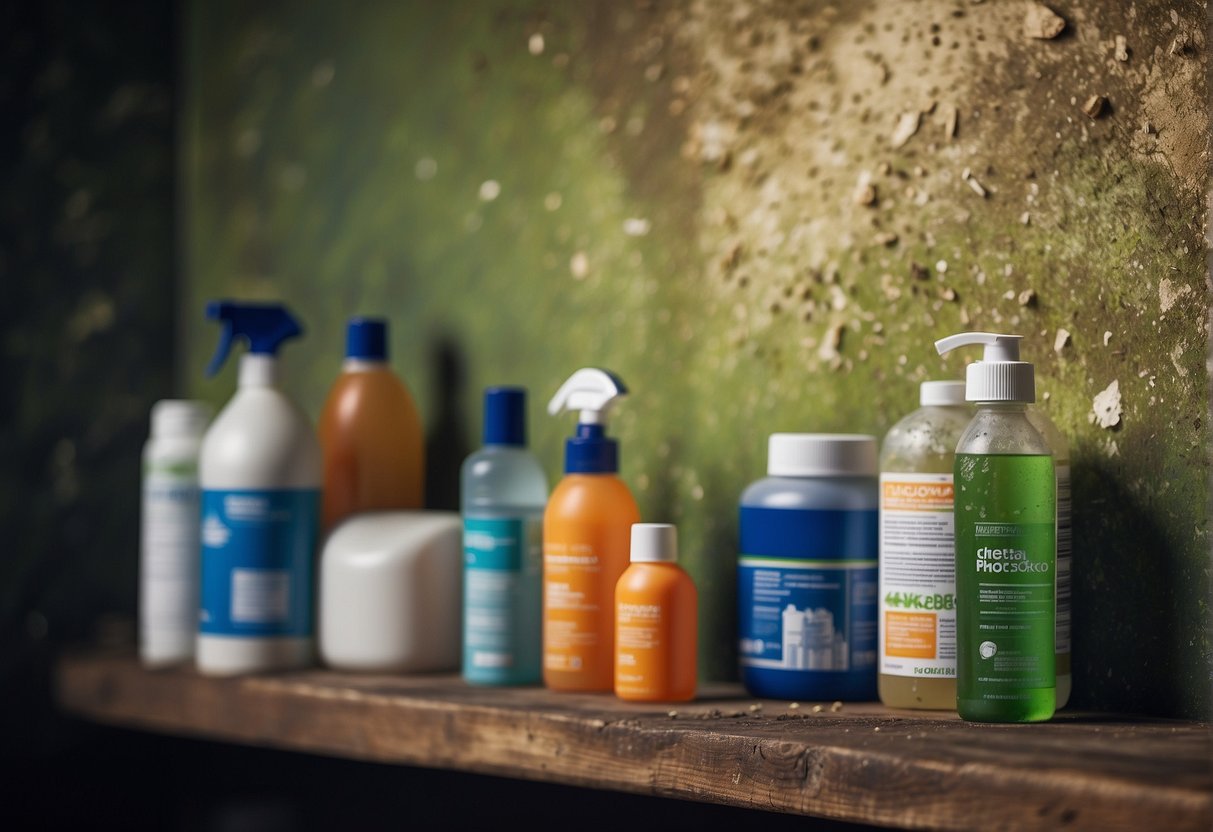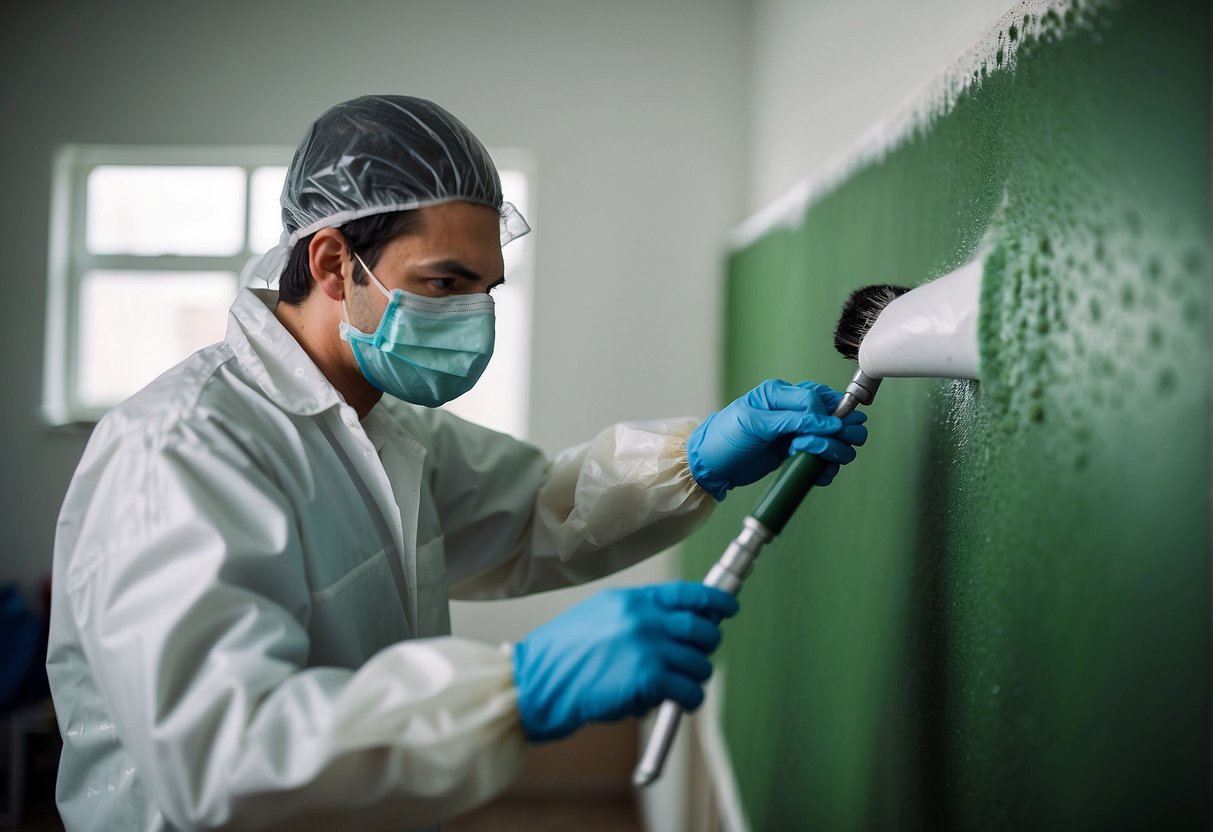As a homeowner, it’s important to take care of your property to prevent damage and keep it looking its best. One common issue that can arise is mold growth on painted surfaces. Not only is mold unsightly, but it can also cause health problems for you and your family. So, can paint mold? The answer is yes, paint can indeed mold.
Understanding mold and its growth is key to preventing it from forming on painted surfaces. Mold thrives in moist environments, so areas with high humidity or moisture, such as bathrooms and kitchens, are more susceptible to mold growth. Proper preparation before painting is also crucial in preventing mold growth. Choosing the right products and ensuring that surfaces are dry and clean before painting will help to prevent mold from forming under the paint.
Key Takeaways:
- Mold can grow on painted surfaces, causing health problems and unsightly damage.
- Understanding mold growth and proper preparation before painting can help prevent mold growth.
- Choosing the right products and practicing prevention and environmental control are key in keeping your property mold-free.
Understanding Mold and Its Growth
Mold is a type of fungus that thrives in moist environments. It can grow on almost any surface, including wood, paper, carpet, and food. Mold spores are present in the air we breathe and can settle on surfaces, where they grow into colonies.
Types and Health Risks of Mold
There are many different types of mold, and some are more harmful than others. Some types of mold produce mycotoxins, which can cause health problems in humans and animals. Exposure to mold can cause allergic reactions, respiratory problems, and other health issues.
Stachybotrys chartarum, also known as black mold, is a particularly dangerous type of mold. It can produce mycotoxins that can cause serious health problems, including respiratory problems, neurological damage, and even death.
Conditions Favoring Mold Growth
Mold needs moisture to grow. High humidity and condensation can create the perfect environment for mold growth. Leaks from pipes or roofs, as well as flooding, can also create moist conditions that promote mold growth. Poor ventilation can also contribute to mold growth, as it can trap moisture in a room.
Preventing mold growth requires controlling moisture levels in your home. You can do this by fixing leaks and other sources of water damage, using dehumidifiers to reduce humidity levels, and improving ventilation in your home. Regular cleaning and maintenance can also help prevent mold growth.
In conclusion, understanding mold and its growth is crucial in preventing and addressing mold problems in your home. By taking steps to control moisture levels and improve ventilation, you can reduce the risk of mold growth and protect your health.
Preparation Before Painting
When it comes to painting over mold, preparation is key. Before beginning any painting project, it is important to detect and assess any mold growth in the area. This can be done by visually inspecting the surfaces for any signs of discoloration or musty odors.
Mold Detection and Assessment
If mold is detected, it is important to assess the extent of the growth and determine the cause of the moisture that is allowing the mold to thrive. This will help to prevent future mold growth and ensure that the mold is properly treated before painting.
Cleaning and Treating Surfaces
Cleaning and treating surfaces is the next step in preparing for painting over mold. It is important to remove any mold from the surfaces before painting, as painting over mold will not eliminate the problem.
One option for cleaning mold is to use a solution of bleach and water. A bleach solution can be effective in killing mold and preventing its regrowth. However, it is important to use caution when working with bleach, as it can be harmful if not used properly.
Another option for cleaning mold is to use a solution of vinegar and water. Vinegar is a natural cleaner that can be effective in killing mold and preventing its regrowth. However, it may not be as effective as bleach in treating severe mold growth.
In addition to cleaning the surfaces, it is important to treat them with a mold-resistant primer before painting. This will help to prevent future mold growth and ensure that the paint adheres properly to the surface.
Overall, preparing for painting over mold requires careful detection and assessment of the mold growth, as well as proper cleaning and treatment of the surfaces. By taking these steps, you can ensure that your painting project is successful and free from mold.
Choosing the Right Products
When it comes to painting over mold, choosing the right products is crucial to ensure a successful outcome. Here are some things to consider when selecting the right products for your project.
Mold-Resistant Paints and Primers
Mold-resistant paints and primers are specifically designed to prevent mold growth on surfaces. These products contain antimicrobial agents that inhibit the growth of mold and mildew. They are ideal for use in areas prone to high humidity, such as bathrooms, basements, and kitchens.
One popular option is Zinsser Mold Killing Primer. This product is a water-based primer that contains a fungicide to kill existing mold and prevent new growth. It can be used on both interior and exterior surfaces and is ideal for use on drywall, plaster, wood, and masonry.
Understanding Antimicrobial Properties
Antimicrobial properties are essential for preventing mold growth on painted surfaces. Antimicrobial agents work by disrupting the cellular processes of microorganisms, preventing them from growing and reproducing. These agents are typically added to paint and primer formulations to provide long-lasting protection against mold and mildew.
When selecting a paint or primer with antimicrobial properties, it is important to consider the type of solvent used. Water-based products are ideal for use in areas with high humidity, as they are less likely to promote mold growth. Solvent-based products, on the other hand, may be more effective in preventing mold growth in areas with low humidity.
In conclusion, choosing the right products is essential for painting over mold. Mold-resistant paints and primers with antimicrobial properties are ideal for preventing mold growth on surfaces. It is also important to consider the type of solvent used when selecting a product for your project. By taking these factors into consideration, you can ensure a successful outcome for your painting project.
Painting Over Mold
As a professional painter, I often get asked if it’s possible to paint over mold. While it may seem like a quick and easy solution, painting over mold is not a permanent fix and can even be dangerous if not done correctly. In this section, I will discuss the steps for effective coverage and long-term maintenance when painting over mold.
Steps for Effective Coverage
Before painting over mold, it’s important to address the root cause of the mold growth. This could be poor ventilation, water leaks, or high humidity levels. Once the cause has been addressed, it’s important to clean the affected area thoroughly. This may involve using a mold-killing solution or even removing the affected material entirely.
After the area has been cleaned and dried, it’s important to use a mold-resistant paint. These paints are specially formulated to include antimicrobial agents that repel bacteria, helping to prevent future mold growth. Be sure to follow the manufacturer’s instructions for application, including the recommended number of coats and drying time.
Long-Term Maintenance
While using mold-resistant paint can help prevent future mold growth, it’s important to continue to address the root cause of the mold growth. This could involve improving ventilation, fixing water leaks, or using a dehumidifier to control humidity levels. Regular cleaning and maintenance of the painted surface can also help prevent mold growth.
In addition to addressing the root cause of the mold growth, it’s important to ensure proper air circulation in the room. This can help prevent moisture buildup and mold growth. Consider using a fan or opening windows to improve air circulation.
In conclusion, painting over mold may seem like a quick and easy solution, but it’s important to address the root cause of the mold growth and use mold-resistant paint for effective coverage. Long-term maintenance, including improving ventilation and air circulation, can also help prevent future mold growth.
Prevention and Environmental Control
As a homeowner, preventing mold growth is key to ensuring a healthy living environment. There are several steps that can be taken to prevent mold growth, including moisture and ventilation solutions, and regular maintenance and inspection.
Moisture and Ventilation Solutions
One of the most important steps in preventing mold growth is controlling moisture. High humidity levels and water damage can lead to mold growth in as little as 24-48 hours. To prevent this, it is important to keep indoor humidity levels below 60% and fix any water leaks or damage immediately.
Ventilation is also important in preventing mold growth. Proper ventilation helps to reduce moisture levels and improve air quality. Fans in bathrooms and exhaust fans in kitchens help to remove excess moisture from the air. Additionally, proper insulation can help to prevent condensation and reduce the risk of mold growth.
Regular Maintenance and Inspection
Regular maintenance and inspection of your home is important in preventing mold growth. This includes checking for leaks in pipes, roofs, and windows, as well as ensuring that gutters are clear and functioning properly. Regularly cleaning and maintaining HVAC systems, including air ducts and filters, can also help to prevent mold growth.
It is important to be proactive in preventing mold growth, as mold can be harmful to both your health and your home. Following these prevention and environmental control tips from the Environmental Protection Agency and the Centers for Disease Control can help to keep your home mold-free and healthy.
Professional Mold Remediation
As a painting contractor, I have come across many cases where homeowners have tried to paint over mold, only to have it return shortly after. This is because painting over mold does not address the root cause of the problem. Mold remediation is necessary to completely remove mold from infested areas.
Professional mold remediation involves identifying the source of the mold growth and removing all contaminated materials. This process is important because mold can release contaminants and organic matter that can be harmful to humans. A professional mold remediation company will use specialized equipment and techniques to remove mold from both porous and non-porous surfaces.
During the mold remediation process, it is important to ensure that the contaminated area is completely sealed off to prevent the spread of mold spores to other areas of the home. The remediation process can take anywhere from a few days to several weeks, depending on the severity of the mold infestation.
It is important to note that painting over mold is not a viable solution to mold growth. Mold-resistant paint can help prevent mold growth on surfaces that are prone to moisture, but it will not kill existing mold. If you suspect that your home has a mold problem, it is important to contact a professional mold remediation company to ensure that the problem is properly addressed.
Frequently Asked Questions
How can you identify mold presence in painted surfaces?
Mold presence can be identified in painted surfaces by looking for signs such as discoloration, peeling, and cracking of the paint. The presence of a musty odor is also a good indicator of mold growth. If you suspect mold growth, it is best to have a professional conduct a thorough inspection to determine the extent of the problem.
What are the health risks associated with moldy paint?
Exposure to moldy paint can lead to a range of health issues, including respiratory problems, allergies, and skin irritation. Prolonged exposure to mold can also lead to more serious health problems, such as asthma and other respiratory conditions. It is important to take immediate action if you suspect mold growth in your home.
What are the best practices for preventing mold growth on painted walls?
The best practices for preventing mold growth on painted walls include maintaining proper ventilation, controlling humidity levels, and addressing any water leaks or moisture issues promptly. It is also important to use mold-resistant paint in areas that are prone to moisture, such as bathrooms and kitchens.
How do you effectively remove mold from underneath paint?
Removing mold from underneath paint can be a complex process, and it is best to have a professional handle the job. The process typically involves removing the affected paint and treating the underlying surface with a mold-killing solution. After the surface has been treated, a mold-resistant paint can be applied to prevent future growth.
What does mold look like when it infiltrates paint on wood or walls?
When mold infiltrates paint on wood or walls, it can appear as dark spots or patches on the surface. The affected area may also appear discolored or have a fuzzy texture. It is important to address mold growth as soon as possible to prevent it from spreading and causing further damage.
Which paints are most effective at inhibiting mold growth?
Mold-resistant paints are specifically formulated to inhibit mold growth and are the best option for areas that are prone to moisture. These paints contain antimicrobial agents that repel bacteria and can provide long-lasting protection against mold growth. Some popular options include Zinsser Perma-White Mold & Mildew-Proof Interior Paint and Benjamin Moore Aura Bath & Spa.

Hi, I’m Sal Muller of Tooltrip.com. My DIY experience led me to understand essential power tools for home projects. Tooltrip.com guides enthusiasts and professionals in choosing right tools for any job. I provide concise top tool reviews for easier, efficient DIY.




